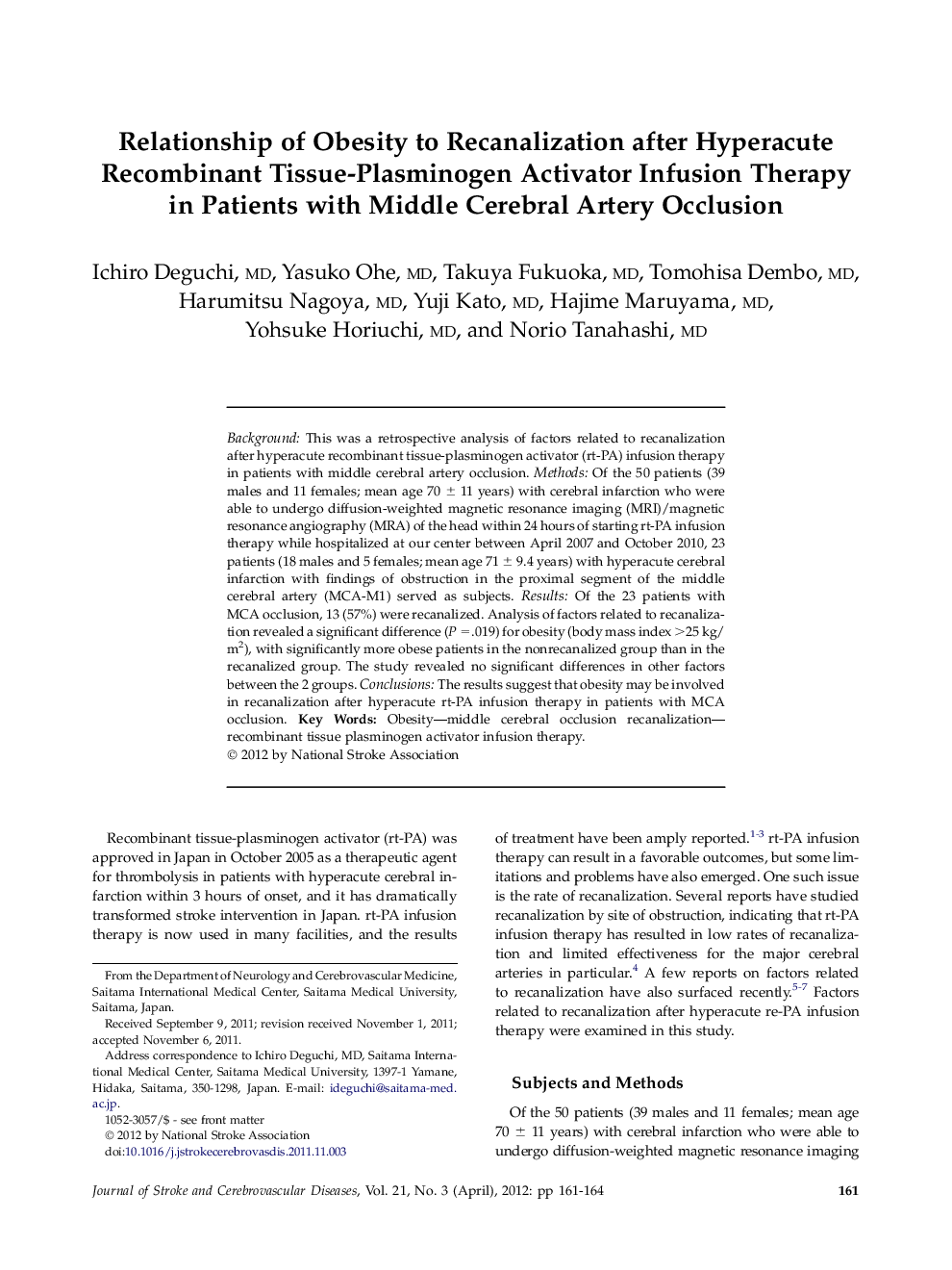| Article ID | Journal | Published Year | Pages | File Type |
|---|---|---|---|---|
| 2711501 | Journal of Stroke and Cerebrovascular Diseases | 2012 | 4 Pages |
BackgroundThis was a retrospective analysis of factors related to recanalization after hyperacute recombinant tissue-plasminogen activator (rt-PA) infusion therapy in patients with middle cerebral artery occlusion.MethodsOf the 50 patients (39 males and 11 females; mean age 70 ± 11 years) with cerebral infarction who were able to undergo diffusion-weighted magnetic resonance imaging (MRI)/magnetic resonance angiography (MRA) of the head within 24 hours of starting rt-PA infusion therapy while hospitalized at our center between April 2007 and October 2010, 23 patients (18 males and 5 females; mean age 71 ± 9.4 years) with hyperacute cerebral infarction with findings of obstruction in the proximal segment of the middle cerebral artery (MCA-M1) served as subjects.ResultsOf the 23 patients with MCA occlusion, 13 (57%) were recanalized. Analysis of factors related to recanalization revealed a significant difference (P = .019) for obesity (body mass index >25 kg/m2), with significantly more obese patients in the nonrecanalized group than in the recanalized group. The study revealed no significant differences in other factors between the 2 groups.ConclusionsThe results suggest that obesity may be involved in recanalization after hyperacute rt-PA infusion therapy in patients with MCA occlusion.
